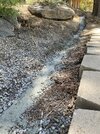I'm considering getting a Model Y LR. I'd be charging it outdoors next to a garage that's about 60' from my house, maybe close to 100' or wiring from the house electric panel to where I would charge the EV. It's and old house & garage. The wiring up to and including the panel is new, but past that it's questionable. The panel is 200 amps (I think).
I'm looking for advice on what I should be asking an electrician who is coming out to give me some estimates. The things I can think of are:
Does the above make sense and is there anything else I should ask?
I'm looking for advice on what I should be asking an electrician who is coming out to give me some estimates. The things I can think of are:
- Is the current 120V wiring to the garage good enough for charging an EV or will I start a fire?
- can the current 120V / 15 amp line be changed to 120v / 20 amp? (which might be all I really need)
- what would it cost to run 240volts out to the garage and what's the most amps that circuit could handle, considering everything else in my house
- assuming my wiring isn't useful as it currently is (old, maybe not up to code), I think I'd need estimates for:
- running a 120v / 20 amp circuit out there - NEMA 5-20
- running 240v / 50 amp (or less amperage if I can't do 50) - NEMA 14-50 or NEMA 6-50
- running 240v / highest amperage and hard-wiring a Tesla wall connector
Does the above make sense and is there anything else I should ask?



